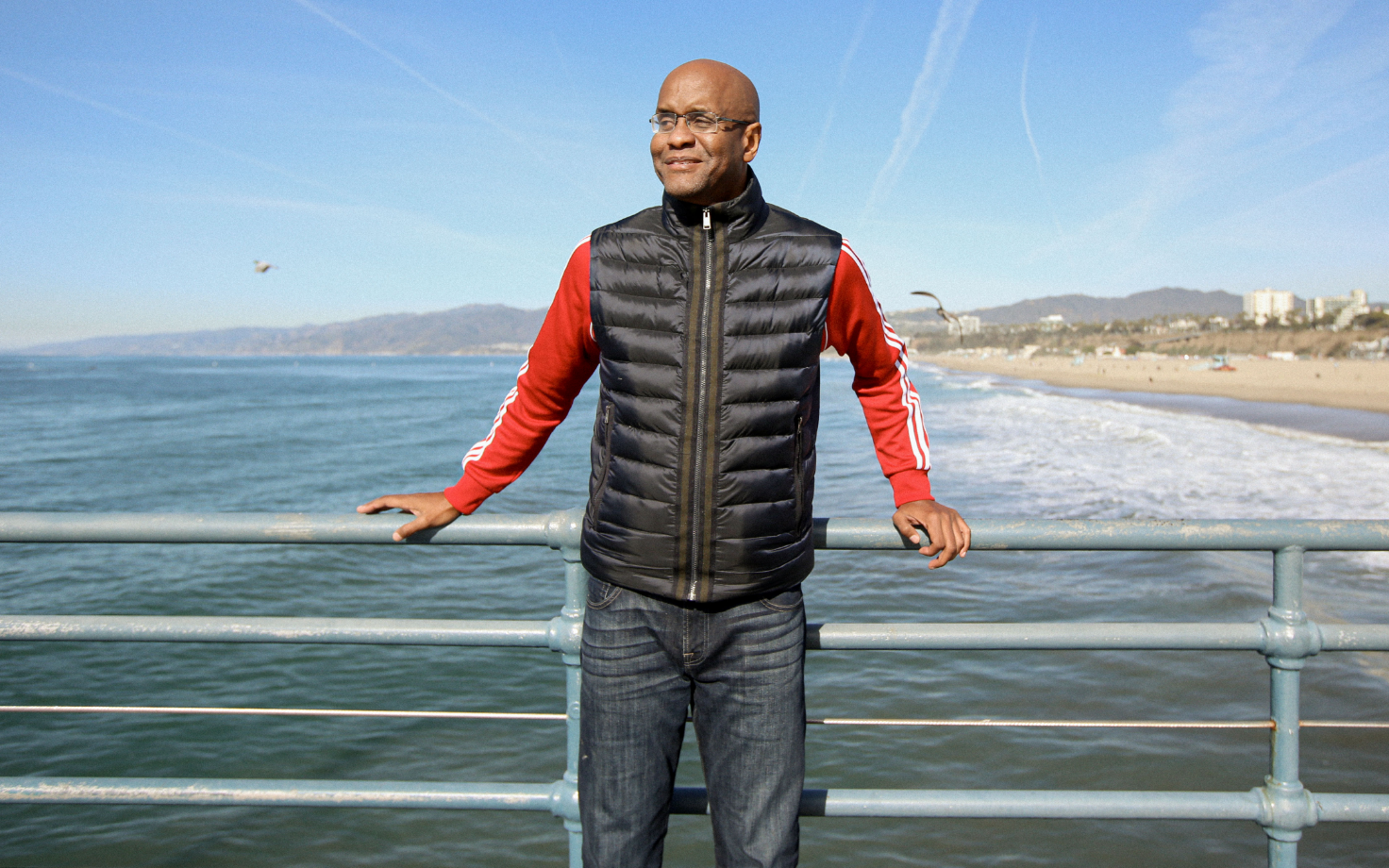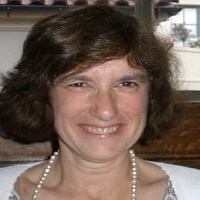“Man, I hate drugs. They just mess me up.”
Kevin Shird didn’t feel well. Most of the way through a course of steroids to relieve a sinus problem, he complained that he hadn’t slept well or been able to concentrate — side effects he attributed to the drug.
Shird pulled a burgundy hoodie up around his neck and struggled to ignore his pain and steroid-induced jumpiness. He rubbed his eyes, rubbed his days-old stubble, and rocked his chair against the wall of a small conference room where we talked at the Pico branch of the Santa Monica Library.
The grousing was a bit rich.
Shird doesn’t drink alcohol. Never liked it, he said. He smoked some weed as a teenager but did not take hard drugs.
Yet during the 1990s, Shird ran one of Baltimore’s major heroin and cocaine rings. By his 20s, Kevin Shird was clearing more than $20,000 a day in cash. The notoriety of Shird’s West Baltimore operation was such that one of his drug runners appeared in David Simon’s 1997 account of that neighborhood, The Corner. The book became the basis for an HBO miniseries and later a blockbuster television series, The Wire.
Shird grew wealthy by hooking an untold number of Baltimore residents on heroin. After serving 12 years behind bars on a series of federal narcotics charges, Shird, now 54, remade himself through slow, painful self-examination. He is a writer and a mentor to young men who are caught up in a misery he knows well: the toxic stew of racism and poverty-born trauma that can boil into hate and violence.
The Los Angeles newcomer has authored books and screenplays as well as a college curriculum on combating racism. He is a speaker on mental health, substance abuse prevention and re-entry into society after incarceration.
He believes that his own path to redemption — he calls it that — holds lessons for poor, young Black men drifting, as he was, toward danger.
Falling apart
That redemption was long in coming and hard won.
A tumultuous family life defined Shird’s childhood. It included his father’s alcoholism, domestic violence, poverty and a threat of eviction. He was identified as a gifted student, especially adept at math. But to avoid escalating chaos at home, he began smoking marijuana and staying out late. Eventually, he dropped out of high school.
“I fell apart,” he recalled.
An impulsive car theft at age 17 was a “turning point,” he said. Shird and two friends came upon a shiny new Lincoln Continental with the motor running, keys in the ignition and no one inside. The driver, they figured, was visiting someone in a nearby house. Shird hopped in and took the wheel. An inexperienced driver, he quickly lost control of the hulking vehicle and collided with several parked cars. Panicked, the teenagers stripped the Lincoln of whatever they could find and fled.
Among the things they took was a paper bag with close to $2,000 in cash, some tucked into church tithe envelopes. “We could have returned the money,” Shird wrote in a memoir. “We could have just put it back in the car and left it somewhere.”
Why didn’t they?
“We were poor, like we couldn’t put food back,” Shird told me. “We were hungry. I’d never seen that much money in my whole life.”
He indulged in Air Jordans but used most of the cash to launch himself as a teenage marijuana dealer. Cocaine and heroin followed, and he eventually ran a ring with some 20 employees.
Shird now regards those early years and the decades that followed as having caused a kind of post-traumatic stress, similar to what battlefield soldiers experience. Researchers and mental health professionals also recognize that same pattern of distress in children exposed to persistent poverty and crime.
“There’s no question that living in a place with a lot of trauma and violence is not healthy,” said Shawn Bushway, an economics professor at the University at Albany and a researcher with the RAND Corporation. “It leads to negative consequences that spiral and accumulate and cause harm.”
Shird has become an evangelist for this view and for policies that alleviate the pain and anger such trauma triggers. He once dreamed of becoming a lawyer, even a cop, but knew that he was heading down a dead end. “Everybody knows … (drug dealing) is wrong,” he has written. “Even in the movies, the drug dealer never rides off into the sunset.”
But for poor kids, the economics and peer pressure make hustling irresistible, he told me.
His math skills and leadership ability, along with a willingness to resort to violence, brought him financial security for the first time. Filet mignon in fancy restaurants replaced the peanut butter sandwiches that were sometimes all his mother could offer for dinner.
Shird carried a gun and used it.
“I’m not a guy who messes with you,” he said. “I’ve given some guys hell, but I’ve never been a predator.”
Recovering
It can be hard to reconcile the soft-spoken, deliberative man I met by chance last fall on a bench at the Santa Monica Pier with the person Shird once was. Seeing the ocean soothes him, he said, so he drives west often from his Fairfax apartment.
Shird served three separate prison terms, but he quickly went back to dealing after his first and second releases. During the last and longest stretch behind bars — seven years — he felt something shift.
Prison had given him time and space to reflect.
“When it’s quiet, you hear yourself better,” he said.
Always disciplined, he became a daily runner, practiced yoga and Islam, and began to prepare for life on the outside with prison courses on navigating re-entry.
He came to see his past in a harsh light.
“What a hypocrite I had become,” he wrote in Lessons of Redemption, the memoir of his street life and time in prison. “I was making money off these people — selling them a substance I hated.”
Quiet also brought the trauma of his early life and the violence of his street life to the surface.
Shird remembered how anger and hatred exploded into a shootout in broad daylight. He and another heroin dealer fired at each other at least 10 times and missed every time.
“I realized how stupid it was,” he said, recalling how he had teared up at the memory. “I was crying because I could have killed some innocent person, and I’d still be in prison.”
On another occasion, witnessing a man being murdered at close range in a nightclub so shook him that he has since avoided clubs.
When a therapist told him that he had PTSD from his exposure to violence, he understood himself in a new way.
He started to write.
“It changed my life. All the pain bottled up in you is no longer bottled up. You have control. You can shut the book, throw away the paper.”
Age also helps men like Shird change, said Bushway, the Albany university professor and researcher.
“They may have more arthritis in their left knee, less energy, whatever,” Bushway said. But perhaps more determinative is that people change their perception of themselves.
“They decide they want a different life, and then consciously take steps to act differently.”
The road ahead
Shird left prison for the last time in 2006. He landed at a Baltimore halfway house.
Moses Hammett soon paid a visit. Hammett was a mentor with the Baltimore-based non-profit Center for Urban Families, where he ran a re-entry program.
Shird quickly impressed Hammett. “I’ve seen very few returning citizens that had the commitment to change the way Kevin did.”
Soon after his release, Shird found work at a call center and then at a mortgage company. He stayed involved with the Center for Urban Families and eventually became a mentor himself.
“I saw the passion of him working with young people and telling stories,” Hammett said. Shird aspired to be the sort of adult role model that he didn’t have.
The mentoring and writing expanded Shird’s audience and network, which led to a deeper engagement on the issues he cared most about.
Thomasina Hiers, a vice president with the Annie E. Casey Foundation, calls him a “thought partner” in her efforts to link “trusted adults” and at-risk young people.
During the Obama administration, Shird worked with other non-profit groups helping White House officials craft federal policy on clemency and drug trafficking.
In 2016, the mayor of Baltimore named him to a task force on heroin treatment and prevention.
Speaking engagements followed.
“One of the things I really respect about Kevin,” Hiers said, “is how he’s taken his experience and used it as teachable moments to help others.”
Shird’s writing now extends beyond his personal story.
In The Colored Waiting Room, published in 2018, he recounts the 1950s and ‘60s civil rights movement through the eyes of co-author Nelson Malden. Now 89, Malden still runs his family’s barbershop in a Montgomery, Ala., hotel.
Martin Luther King Jr. was a regular customer during those years.
Shird and Malden have appeared together before audiences to discuss their book.
Wes Moore, Maryland’s new governor and Shird’s longtime friend, publicly lauded the book, calling it “an important exploration of our past and a roadmap for our future.”
Shird moved to L.A. in 2022, to turn his books into films. The Colored Waiting Room is at the top of his list. Ask him, and he’ll pull out his phone and show you a pitch deck he has made to interest movie producers.
Shird recently finished A Life for a Life, a book exploring the impact of trauma and violence on young people and identifying policies that he believes would help them. The book is scheduled for publication next year, and he is working on a companion podcast.
Shird knows Hollywood’s long odds. But he has the confidence of someone who has come a long way, slowly.
“I’m going to win an Oscar one day,” he told me quietly.

























